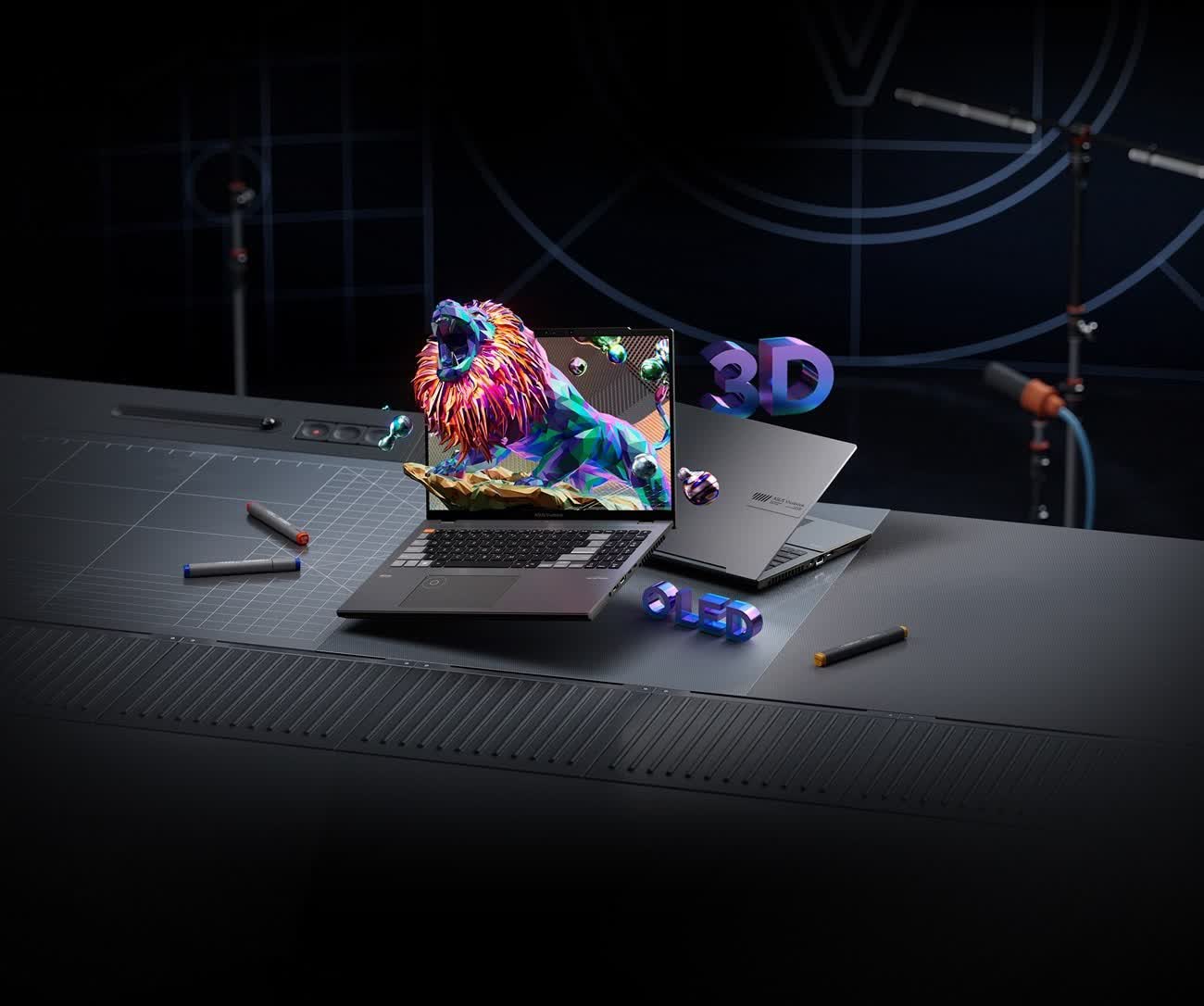Something to look forward to: Stereoscopic 3D never took hold with mainstream audiences, but Asus is taking another shot at it with a couple of its latest laptops. The company's new display technology seeks to remove some of 3D's biggest problems with a combination of special panel features and eye tracking.

Asus unveiled laptops with 3D OLED screens at CES this week. The displays are autostereoscopic – meaning they create the 3D effect without requiring special glasses. The company is advertising the technology for content creation, watching movies, and gaming.
Spatial Vision promises a 3D effect that holds up from multiple viewing angles. The Verge writes that two people could see a 3D image on the screen simultaneously. Asus achieves this through two cameras above the display that track users' eyes to continually adjust the 3D image, even as their viewing angle changes. Lenticular lenses in the screen transmit separate stereo images to each eye to create the effect.
Regarding content, Spatial Vision supports a wide range of platforms, such as Steam VR, OpenXR, Vulkan, WebXR, Nvidia CloudXR, and more. It also supports 3D software like Blender, SketchUp, Nvidia Omniverse, VRED, Twinmotion, and eDrawings. Most 3D file formats like 3ds, obj, fbx, gltf, glb, stl, stp, mp4, avi, and sbs also work with Spatial Vision.
To make finding and using 3D content easier, the Asus Spatial Vision Hub will assemble a collection of 3D-compatible model viewers, media players, photo viewers, and games. According to The Verge, legacy 3D content works on Spatial Vision but doesn't look as good as software specifically designed for the system.
The 3D screens will debut in new versions of the ProArt Studiobook 16 (H7604) and Vivobook Pro 16X (K6604). Both feature Intel i9-13980HX CPUs, Nvidia RTX 4070 GPUs, and up to 64GB of DDR5 RAM. The screens for both laptops are 120Hz but use an unusual 16:10 resolution Asus calls "3.2K" – 3200 x 2000 pixels. The company hasn't yet announced prices or release dates, but most available 16-inch Vivobook Pros sit around $1,600, while ProArt Studiobooks of that size cost over $2,000.
Aside from the 3D screens, Asus's new laptops join a trend of laptops debuting at CES 2023 with Intel 13th-generation Raptor Lake processors and RTX 4000 series graphics cards. These include new models from Alienware, Razer, Acer, and MSI. MSI's upcoming flagship laptops are some of the first to support PCIe 5.0 SSDs.
https://www.techspot.com/news/97170-asus-debuts-laptops-glasses-free-3d-screens.html